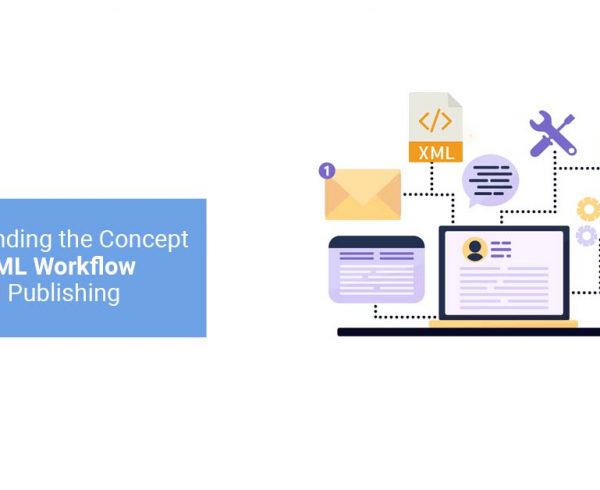XML (Extensible Markup Language) is a markup language that is commonly used for storing and exchanging data between different software systems.
Table of Contents:
- What is the Significance of Using XML?
- Platform-independent XML
- Self-Describing XML
- Extensible XML
- Human-Readable XML
- Interoperable XML
What is the Significance of Using XML?
- Platform-independent: XML is platform-independent, meaning it can be used on any system regardless of the operating system, programming language or software application.
- Self-Describing: XML is a self-describing language, meaning it provides a clear and easy-to-understand description of the data it contains. This makes it easy for different systems to understand and interpret the data.
- Extensible: XML is extensible, meaning it allows developers to create their own tags and elements, making it suitable for a wide range of applications.
- Human-Readable: XML is human-readable, meaning it can be easily read and understood by humans. This makes it easy for developers to create, modify, and debug XML files.
- Interoperable: XML is interoperable, meaning it can be used to exchange data between different systems and applications, even if they are developed by different vendors or on different platforms.
Overall, the significance of using XML lies in its ability to provide a standardized, flexible, and interoperable format for storing and exchanging data between different software systems.
Platform-independent XML
Platform-independent XML refers to XML documents that can be exchanged and processed across different hardware and software platforms without modification.
In other words, the structure, syntax, and content of platform-independent XML documents are designed to be portable and not tied to any specific operating system or software application.
This is achieved by adhering to standards and best practices for XML development, such as using a consistent and well-defined document structure, avoiding platform-specific coding practices or extensions, and defining XML schemas and document type definitions (DTDs) that are themselves platform-independent.
Platform-independent XML is particularly useful for data interchange between different software applications or systems that run on different platforms or use different programming languages. By using platform-independent XML, these applications can communicate and share data in a standardized and interoperable way, without requiring any modifications to the XML documents or the underlying software.
Self-Describing XML
Self-describing XML refers to the ability of an XML document to describe its structure and content in a clear and well-defined way, without requiring any external documentation or context.
In other words, a self-describing XML document is designed to be easily understood by humans and software applications alike, without relying on any additional information beyond the XML document itself.
This is achieved by using well-defined XML tags and attributes that provide meaningful descriptions of the data elements they represent, along with a consistent document structure and format.
For example, an XML document that contains information about a person might use tags like <first-name>, <last-name>, <email>, and <phone> to describe the different pieces of data, along with attributes like “type” or “format” to provide additional context.
By being self-describing, XML documents can be easily exchanged and processed by different software applications or systems, without requiring any prior knowledge or external documentation. This makes them particularly useful for data interchange and integration in a wide range of industries and applications.
Extensible XML
Extensible XML refers to the ability to customize and extend the structure and content of XML documents beyond the standard XML tags and attributes defined by the XML specification.
In other words, an extensible XML document is designed to allow developers to add their own custom tags, attributes, and elements to the document structure, in order to better represent the specific data elements or business processes that the XML document is intended to capture.
This is achieved by using XML schema or document type definition (DTD) languages to define the structure, constraints, and validation rules for the XML document. These schema or DTD definitions can be used to specify custom tags and elements that are specific to the particular application or domain being represented by the XML document.
For example, an XML document that contains information about a product might use a custom tag like <product-description> or <product-image> to capture specific details about the product that are not covered by the standard XML tags and attributes.
By being extensible, XML documents can be tailored to the specific needs and requirements of different applications or industries, while still maintaining the interoperability and compatibility benefits of the standard XML format. This makes them a powerful tool for data integration, exchange, and representation in a wide range of contexts.
Human-Readable XML
Human-readable XML refers to the ability of an XML document to be easily read and understood by humans, without requiring any special tools or technical knowledge.
In other words, a human-readable XML document is designed to have a clear and well-defined structure, with meaningful and descriptive tags and attributes that make it easy for humans to interpret the data and understand its intended purpose.
This is achieved by following established best practices and guidelines for XML development, such as using consistent and meaningful tag and attribute names, using indentation and formatting to make the document structure clear and easy to follow, and providing comments or annotations to explain the purpose or context of different data elements.
For example, an XML document that contains information about a person might use tags like <first-name>, <last-name>, <email>, and <phone> to clearly and concisely represent the different pieces of data, with attributes like “type” or “format” to provide additional context.
By being human-readable, XML documents can be easily shared and understood by developers, data analysts, and other stakeholders, without requiring any specialized software or training. This makes them a powerful tool for data exchange, integration, and representation in a wide range of contexts, including web development, data processing, and enterprise application integration.
Interoperable XML
Interoperable XML refers to the ability of XML documents to be exchanged and processed seamlessly between different software applications or systems, regardless of the platforms or technologies involved.
In other words, interoperable XML documents are designed to be compatible and consistent with the XML standards and best practices, and to follow established conventions for data representation and exchange.
This is achieved by using standard XML schemas or document type definitions (DTDs) that define the structure, format, and constraints of the XML document, along with clear and well-defined tags and attributes that are universally understood and recognized.
For example, an XML document that contains information about a product might use tags like <product-name>, <product-description>, <price>, and <availability>, along with attributes like “currency” or “unit” to provide additional context.
By being interoperable, XML documents can be easily exchanged and processed by different software applications or systems, regardless of the platforms or technologies involved. This makes them a powerful tool for data integration and exchange in a wide range of contexts, including web services, enterprise application integration, and data sharing between different organizations or industries.
Related Article – First XML Workflow in Journal Publishing








